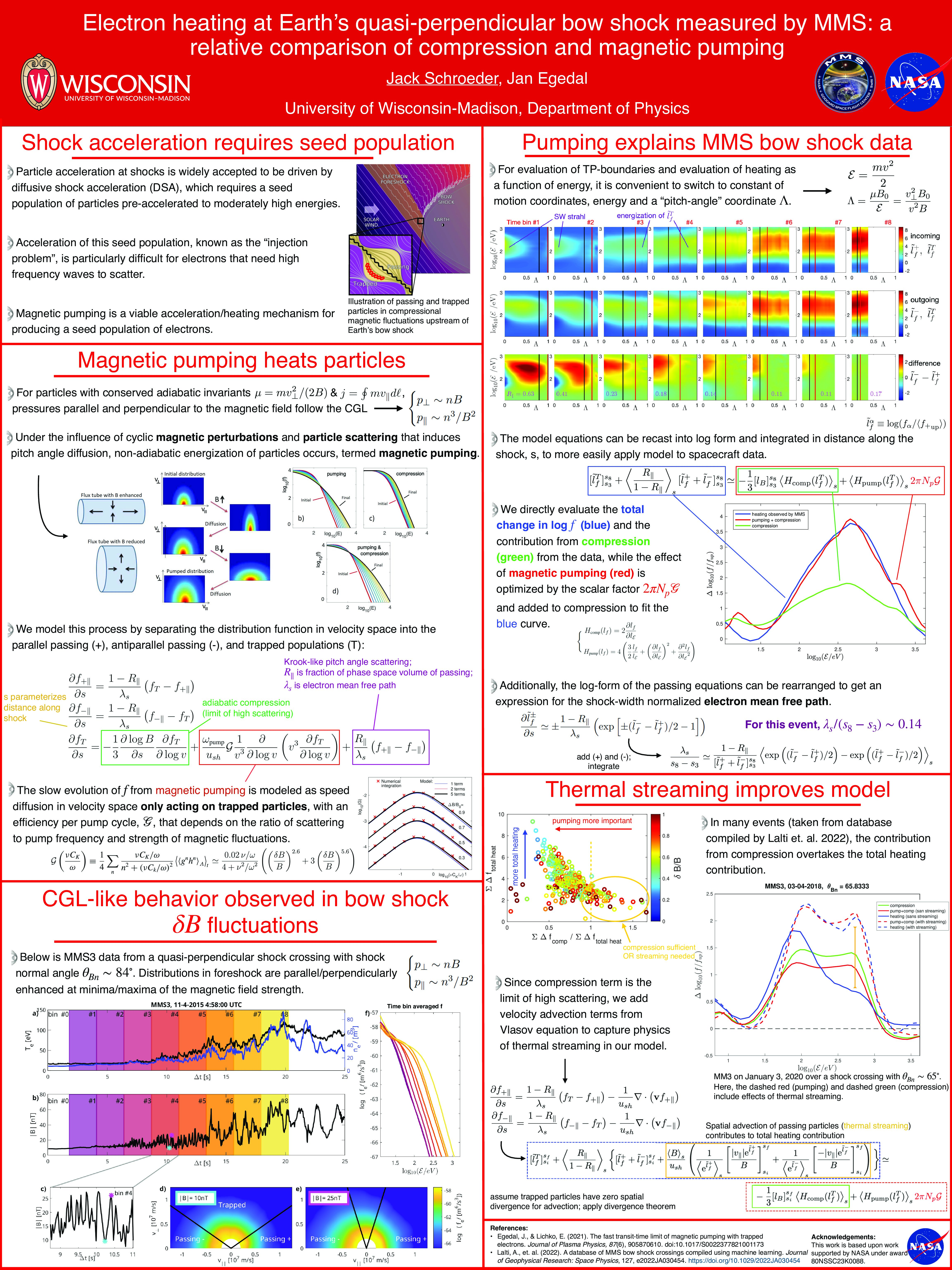Authors: Jack M. Schroeder (University of Wisconsin-Madison), Jan Egedal (University of Wisconsin-Madison)
We investigate the efficiency of electron heating via magnetic pumping at Earth’s quasi-perpendicular bow shock directly from in situ Magnetospheric Multiscale Mission (MMS) observations. Previous work [1] shows magnetic pumping can accelerate trapped electrons and recreate electron velocity distributions measured by MMS to high accuracy. Motivated by these results, an updated model for the evolution of the electron velocity distribution across the bow shock is formulated by treating passing and trapped particles as separate but coupled populations. Critically, we allow particles to scatter from one population to another using a Krook-type scattering operator. The model is applied to MMS observations from November 4, 2015. Our analysis shows that the heating contribution from compressional effects is insufficient by a factor of two orders of magnitude to account for the total heating observed by MMS. However, when combined with compression the effect of magnetic pumping acting on trapped electrons accounts for the total amount of heating and accurately predicts the energy scaling of particle acceleration.
[1] Lichko, E., Egedal, J. Nat Commun 11, 2942 (2020). https://doi.org/10.1038/s41467-020-16660-4The material presented here is based upon work supported by NASA under award No. 80NSSC23K0088.


